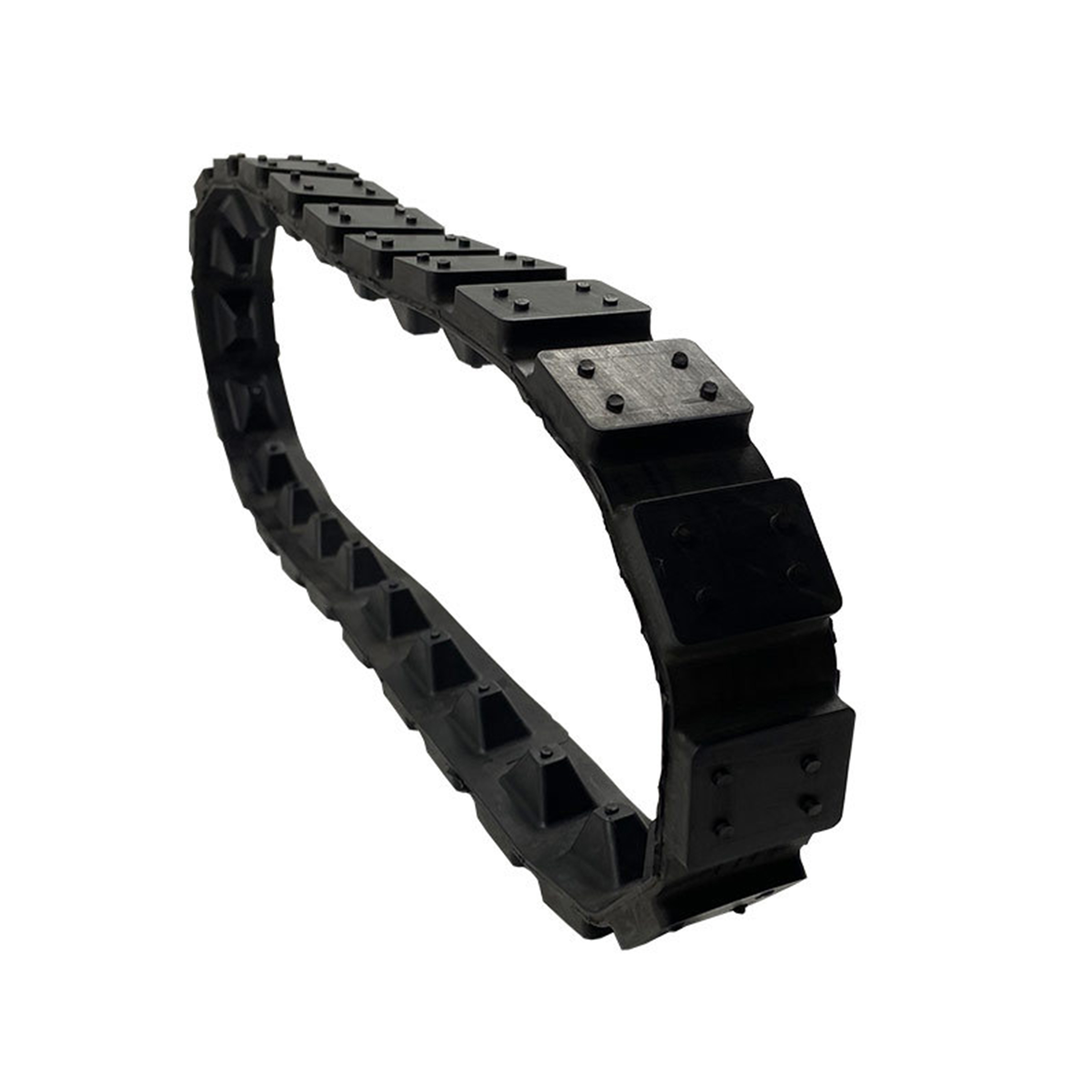A Rubber Track Chassis is an essential component in construction machinery, agricultural equipment, and small utility vehicles. Its material composition directly affects durability, flexibility, and performance. Understanding the common materials used for Rubber Track Chassis provides insight into their design, function, and suitability for various applications.

Rubber Layer Materials
The primary layer of a Rubber Track Chassis is the rubber itself, which provides traction, shock absorption, and wear resistance. Different types of rubber are used depending on the required performance:
Natural Rubber: Offers high elasticity and wear resistance. It provides a smooth ride and strong grip on various surfaces, making it suitable for agricultural machinery and light construction equipment.
Synthetic Rubber (SBR or NR blends): Combines the properties of natural rubber with enhanced resistance to oil, heat, and abrasion. Synthetic rubber increases the lifespan of the chassis, especially in industrial and construction settings.
EPDM Rubber: Provides high resistance to weather, UV rays, and temperature fluctuations, making it ideal for outdoor operations where environmental factors are a concern.
The choice of rubber affects traction, flexibility, and overall durability, which are critical for reliable operation.
Reinforcement Layers
Reinforcement layers are embedded within the rubber of the track chassis to provide structural strength and support. These layers prevent stretching, tearing, and deformation under heavy loads.
Steel Cords: Steel reinforcement provides high tensile strength and durability. Tracks with steel cords are often used in heavy machinery, where resistance to deformation is crucial.
Textile Fabric Layers: High-strength fabrics, such as nylon or polyester, offer flexibility while maintaining shape and preventing cracking. They are commonly used in medium-duty equipment.
Kevlar or Aramid Fibers: These fibers offer cut resistance and additional durability without adding excessive weight. They are ideal for applications involving abrasive surfaces or debris.
Reinforcement layers significantly enhance the performance and lifespan of a Rubber Track Chassis under demanding conditions.
Structural Components
Structural components of a Rubber Track Chassis include the internal frameworks and connectors that maintain its form and facilitate smooth operation.
Metal Guides and Plates: Metal components embedded in the track provide guidance and support, ensuring the chassis remains aligned on the rollers and sprockets.
Rubber Pads and Tread Patterns: The tread design affects grip and traction. Different rubber compositions and pad shapes are used to optimize performance for specific terrain types.
Bonding Adhesives: High-quality adhesives are used to bond rubber layers to reinforcement materials, ensuring structural integrity and preventing delamination during operation.
These components work together to ensure that the Rubber Track Chassis maintains stability, traction, and operational efficiency.
Environmental and Performance Considerations
The materials chosen for a Rubber Track Chassis are often influenced by environmental and operational requirements.
Temperature Resistance: Tracks exposed to extreme temperatures require rubber and reinforcement materials that maintain flexibility and strength in both hot and cold conditions.
Chemical Resistance: Machinery used in industrial or agricultural environments may encounter oils, fuels, and chemicals, necessitating materials resistant to degradation.
Terrain Adaptability: Softer rubber compounds provide better grip on soft ground, while harder compounds are more suitable for rocky or abrasive surfaces.
Selecting the right combination of materials ensures that the Rubber Track Chassis performs efficiently across diverse conditions.